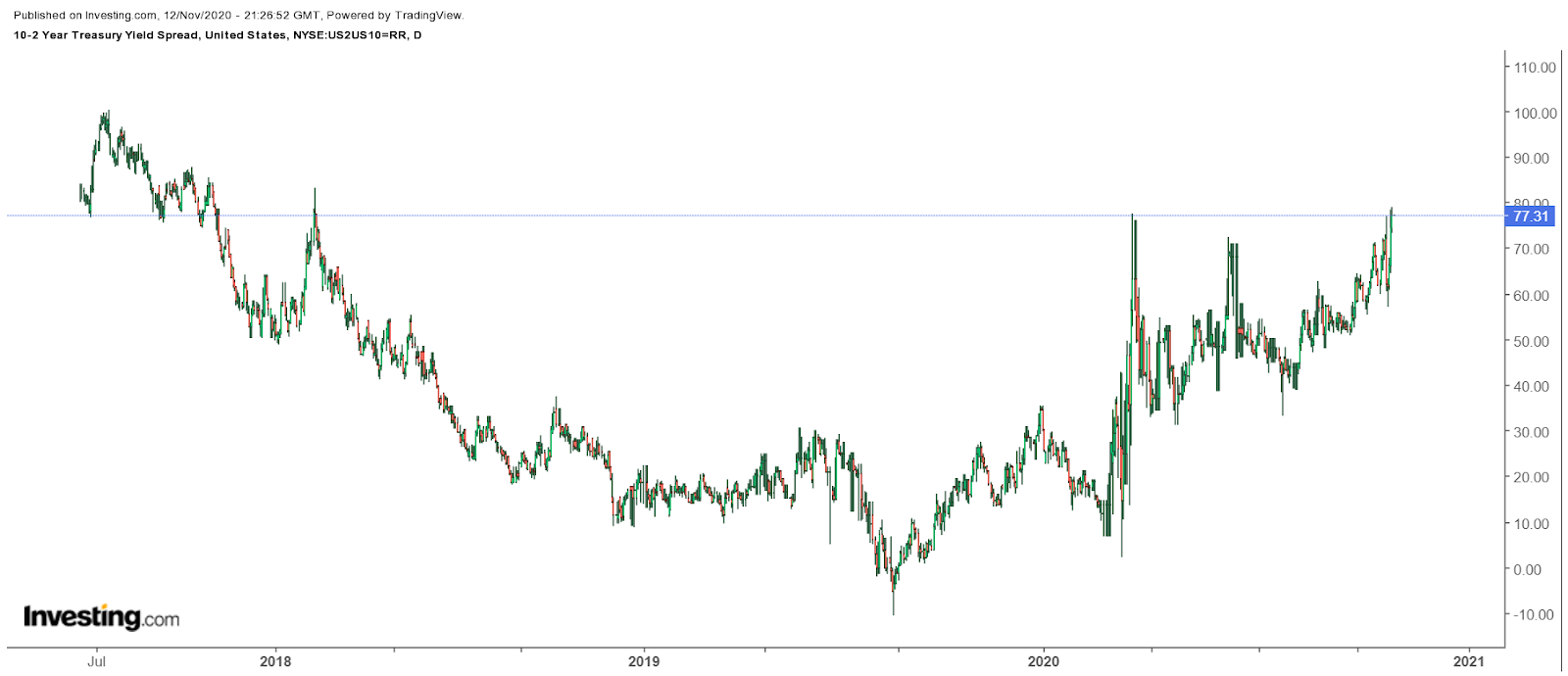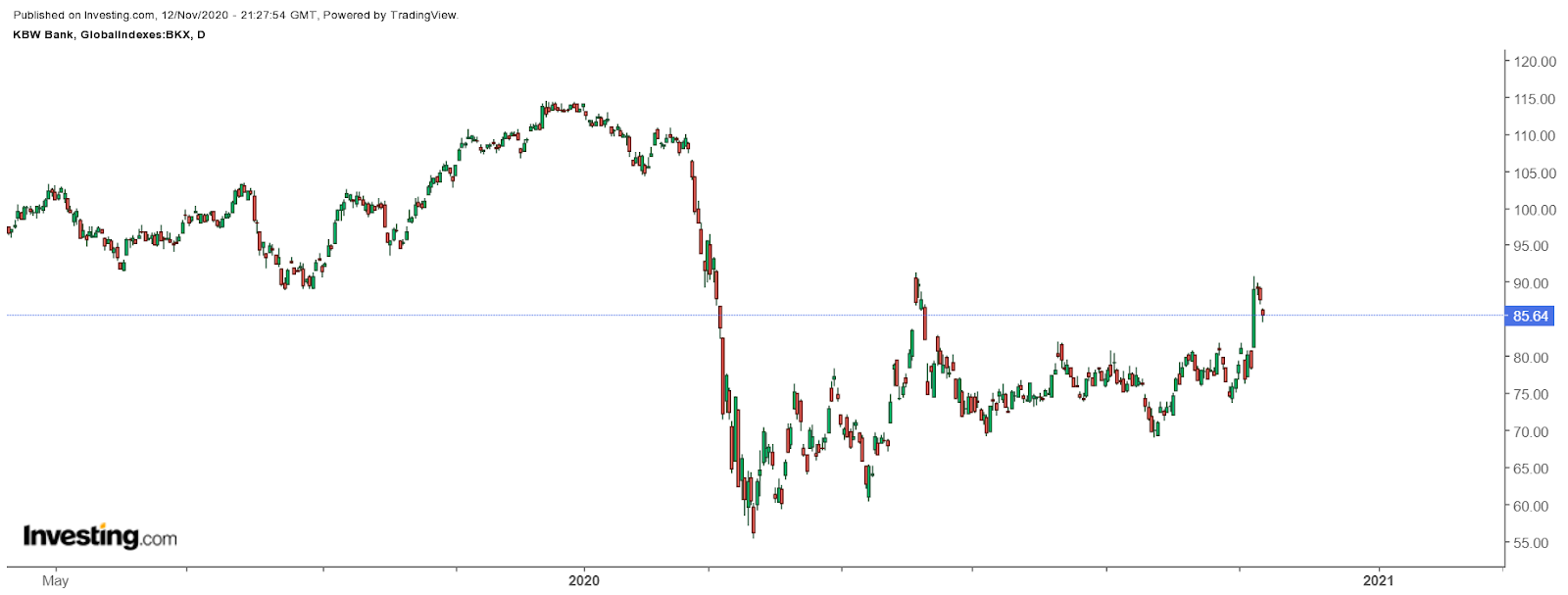This article was written exclusively for Investing.com
With the promising news on Monday about Pfizer's (NYSE:PFE) new COVID-19 vaccine, a vicious rotation ensued. Investors began dumping all those technology names that have benefited from the stay-at-home trade, while traditional bricks-and-mortar stocks have struggled. News of the vaccine may signal a change in the market trend as investors begin to look to the future.
Since the market is a forward-looking discounting mechanism, it is essential to think about the world in 6 to 9 months, especially if the vaccine is truly around the corner. Even more so if it proves to be as efficacious as Pfizer's data showed. An improving economy could help to send yields on the long end of the curve higher. It could even send the banks and other cyclical sectors up as money begins to rotate away from some of the technology stocks that have soared.

Higher Yields, Wider Spreads
While it may merely be a short-term trend or the start of something bigger, yields on the 10-year Treasury have begun to rise. Currently, trading around 90 basis points, up from around 50 basis points mid-summer, a considerable jump. While still low relative to rates a year ago, the spread on the 10-year and two-year Treasuries have grown to their widest since early 2018.
Those wider spreads could help drive some of the traditional banks higher, especially if those widening spreads predict an improving outlook for the overall economy. This could trigger a rotation into these financial stocks such as JPMorgan (NYSE:JPM), Bank of America (NYSE:BAC), and Citigroup (NYSE:C). It could also help drive some of the credit card stocks to perform better, such as Capital One (NYSE:COF) or American Express (NYSE:AXP).

This shift and change in the bond market and its spread could signal that better economic growth may return, indicating the end of the stay at home trade. If the bond market perceives a return to growth, investors may choose to sell some of those technology stocks we have grown so fond of.
Buy-The-Dip Crowd
What may be more worrisome is that the "buy the dip" crowd may find out that a pullback is not a dip but the start of a new trend lower. Should there be an actual rotation trade that occurs, investors may find that the money leaving some of the high-flying, stay-at-home names doesn't return but instead stays invested in the re-opening stocks.
Of course, we have seen this show before. With the market flip-flopping, jumping heavily into the re-opening stocks, and then rushing back into the technology sector several times over the last few months. The question is, will this time will be different?
It may turn out that this time it is—with the prospects for a vaccine and improving therapeutics. So in the next 6 to 9 months there may finally be an economic recovery, leading to higher yields. While this would help to lift some of the financial stocks and cyclical names, it would also likely mark the end of the overvalued technology sectors run higher.
